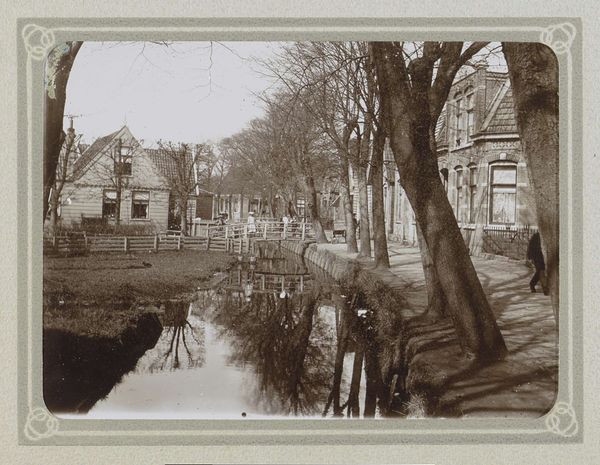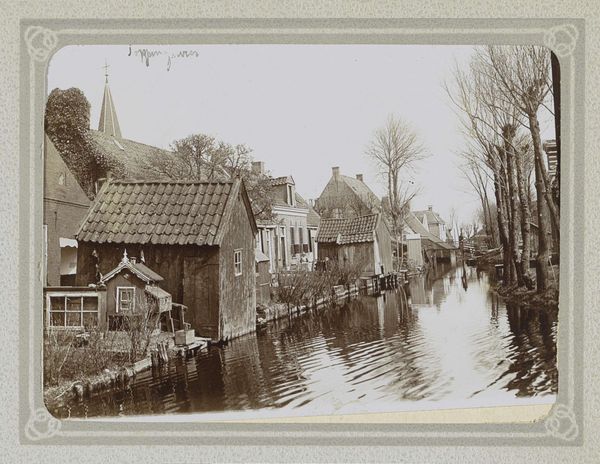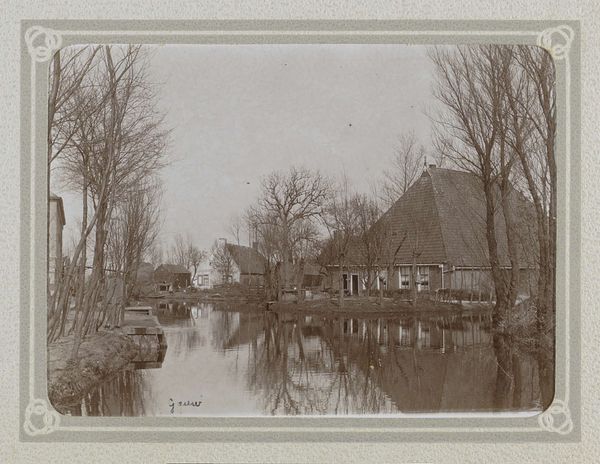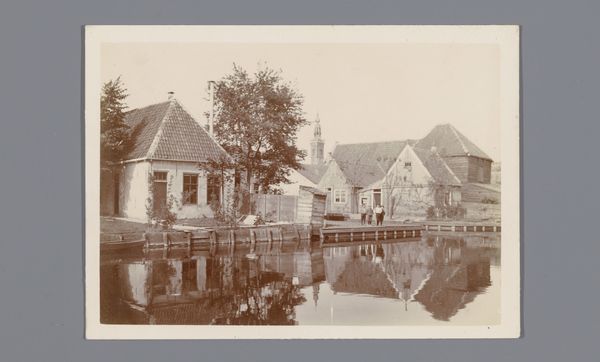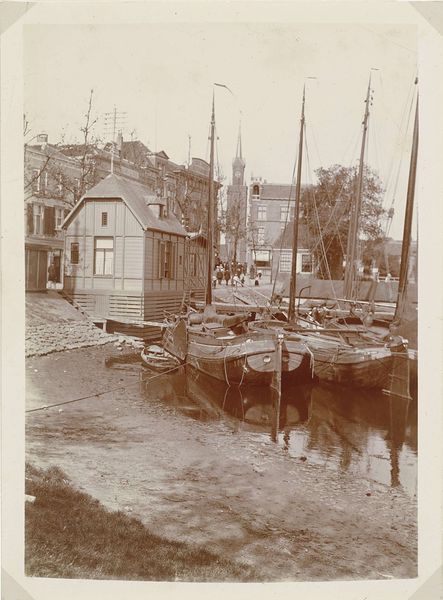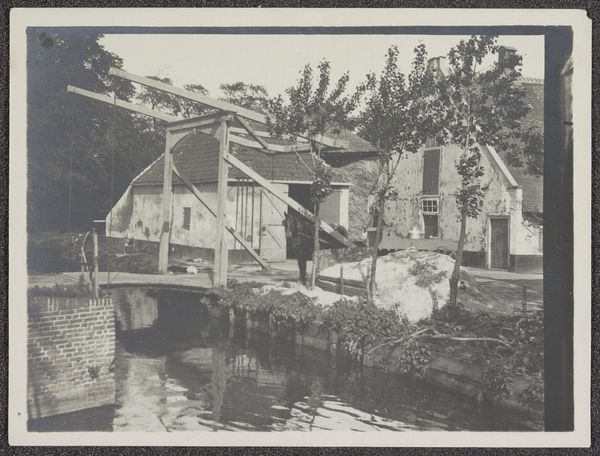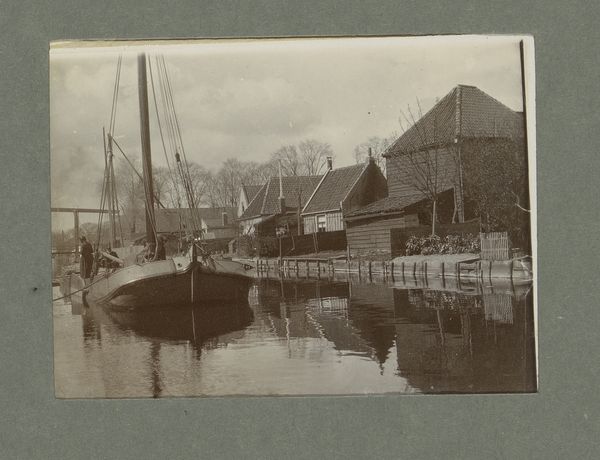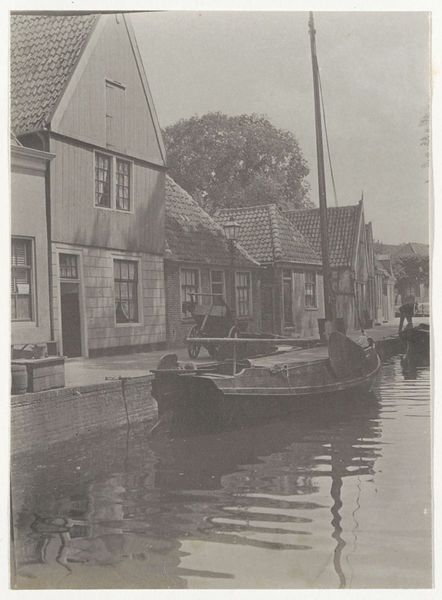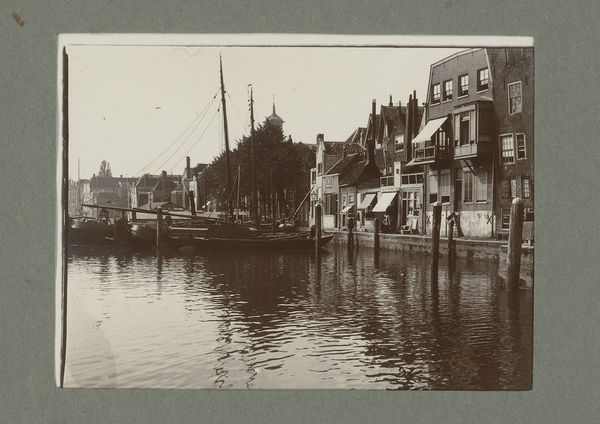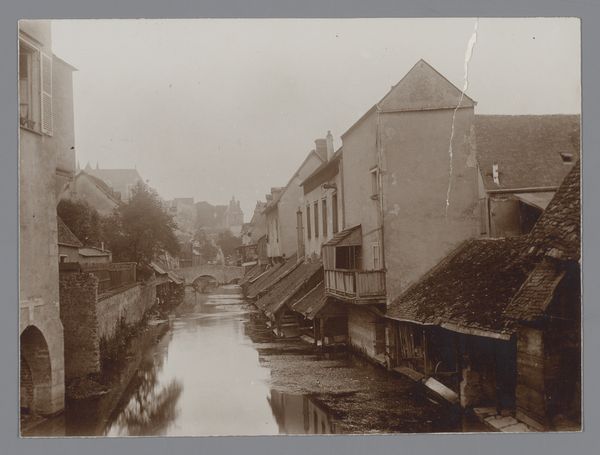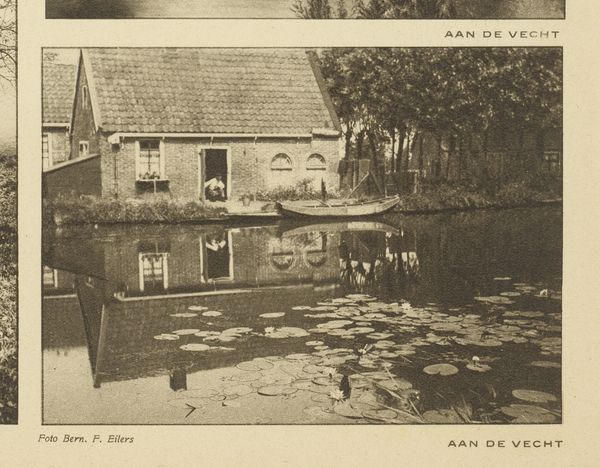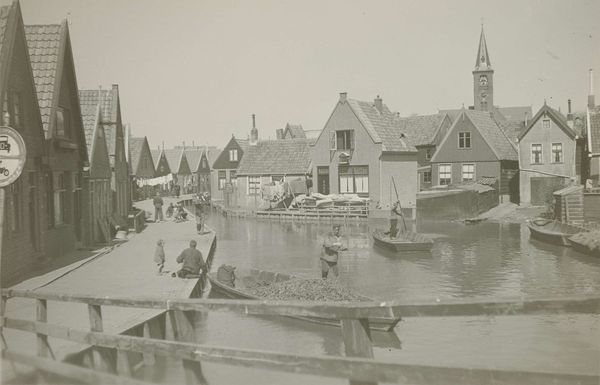
photography, gelatin-silver-print
#
dutch-golden-age
#
landscape
#
photography
#
gelatin-silver-print
#
cityscape
Dimensions: height 73 mm, width 99 mm
Copyright: Rijks Museum: Open Domain
Curator: Here we have a gelatin silver print titled "Aangemeerde roeiboten bij Volendammer huizen," placing it sometime between 1920 and 1940, credited to G. Hidderley. Editor: The first thing that strikes me is how muted everything feels. There's a melancholic quietness evoked by the reflections in the water and the close proximity of the buildings. It's an intimate scene, wouldn't you say? Curator: Indeed. Note how Hidderley employs a sharp focus to render the facades of the houses and the textures of the boats. The light is diffused, contributing to the overall flatness, yet it accentuates the geometric forms inherent to the architecture. The photograph’s composition, especially in terms of its organization, reveals its intrinsic essence. Editor: I wonder, what's the lived reality behind these picture-perfect Dutch Golden Age facades? We know that throughout Dutch history, access to waterways has dictated trade routes and economic power. The image might hint at the realities of daily life and labour of marginalized communities, where dependence on these waters was absolute. What about the absence of people apart from those perhaps on the boat, what might that be symbolic of? Curator: Your socio-historical reading certainly provides another way in. But it's the use of tonal gradations – the transition from light to dark – that holds my attention, revealing depth, but not revealing all. There is more implied, for example, than represented of the setting. It speaks to the pure aesthetic language of photography, the use of shape and texture creating a composition that balances stillness with depth. Editor: Perhaps stillness hides complexity? Look at the peeling paint, the crooked shutters. They tell a different story – the wear and tear of daily existence, not just some compositional bliss. I would imagine life wasn't always still for some communities near water. Curator: Still, Hidderley frames this complex life with visual language that rewards us to see beyond lived realities. Editor: Which prompts us to really question which version of history is captured and how that narrative unfolds. Curator: True, and perhaps we could agree that by visually decoding and contextualizing this image, we can gain a better appreciation for what photography might be representing and concealing.
Comments
No comments
Be the first to comment and join the conversation on the ultimate creative platform.
